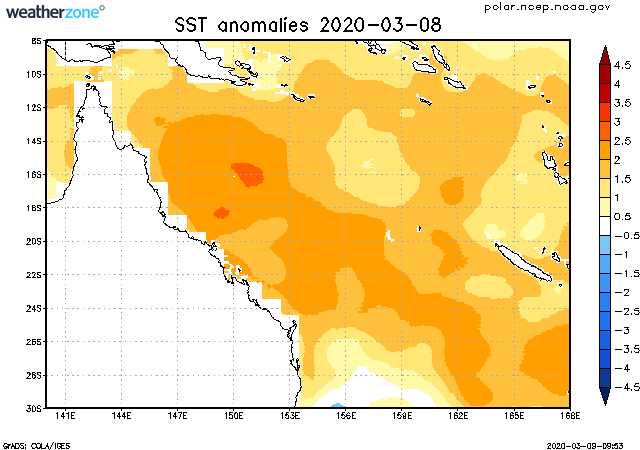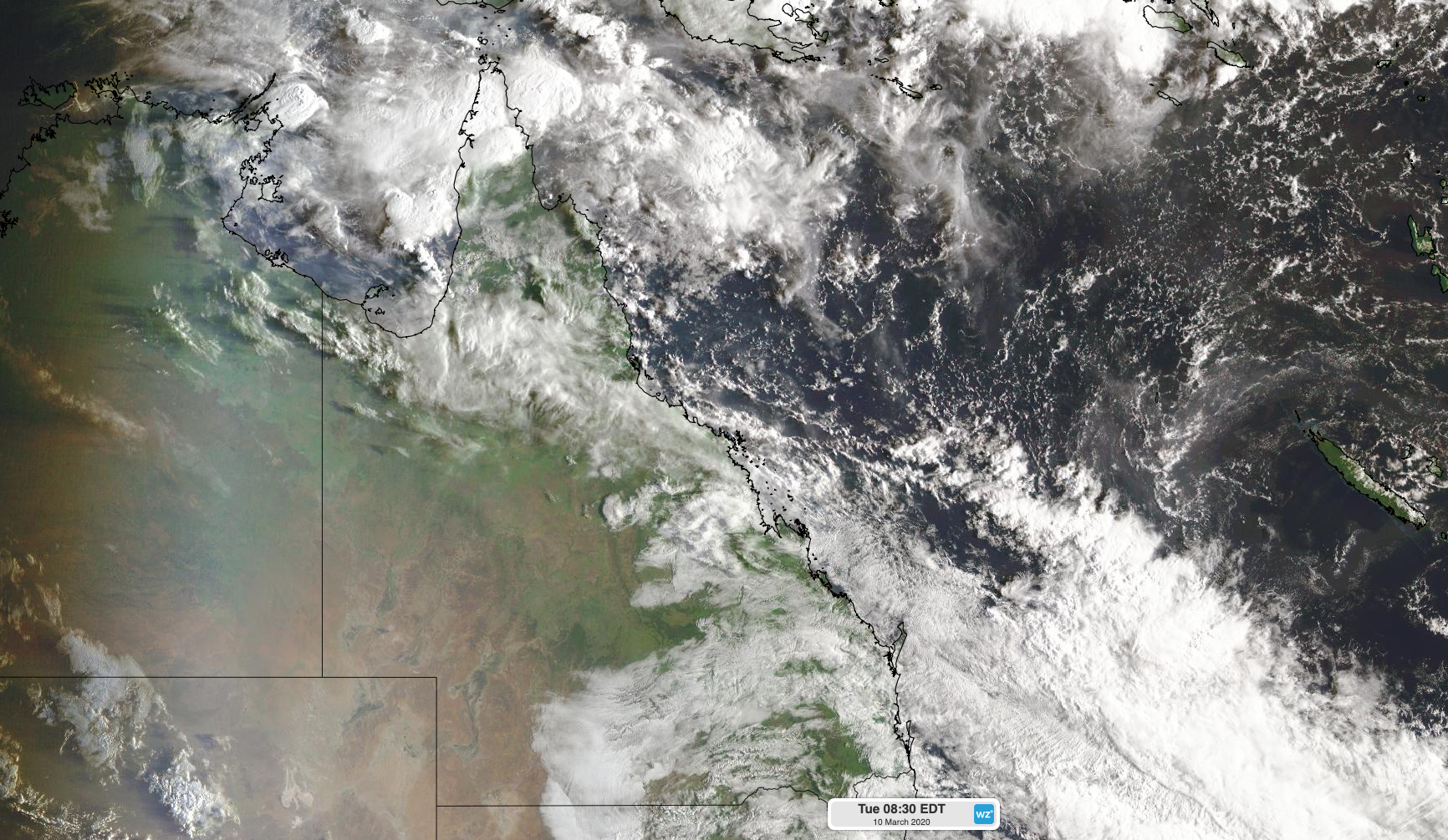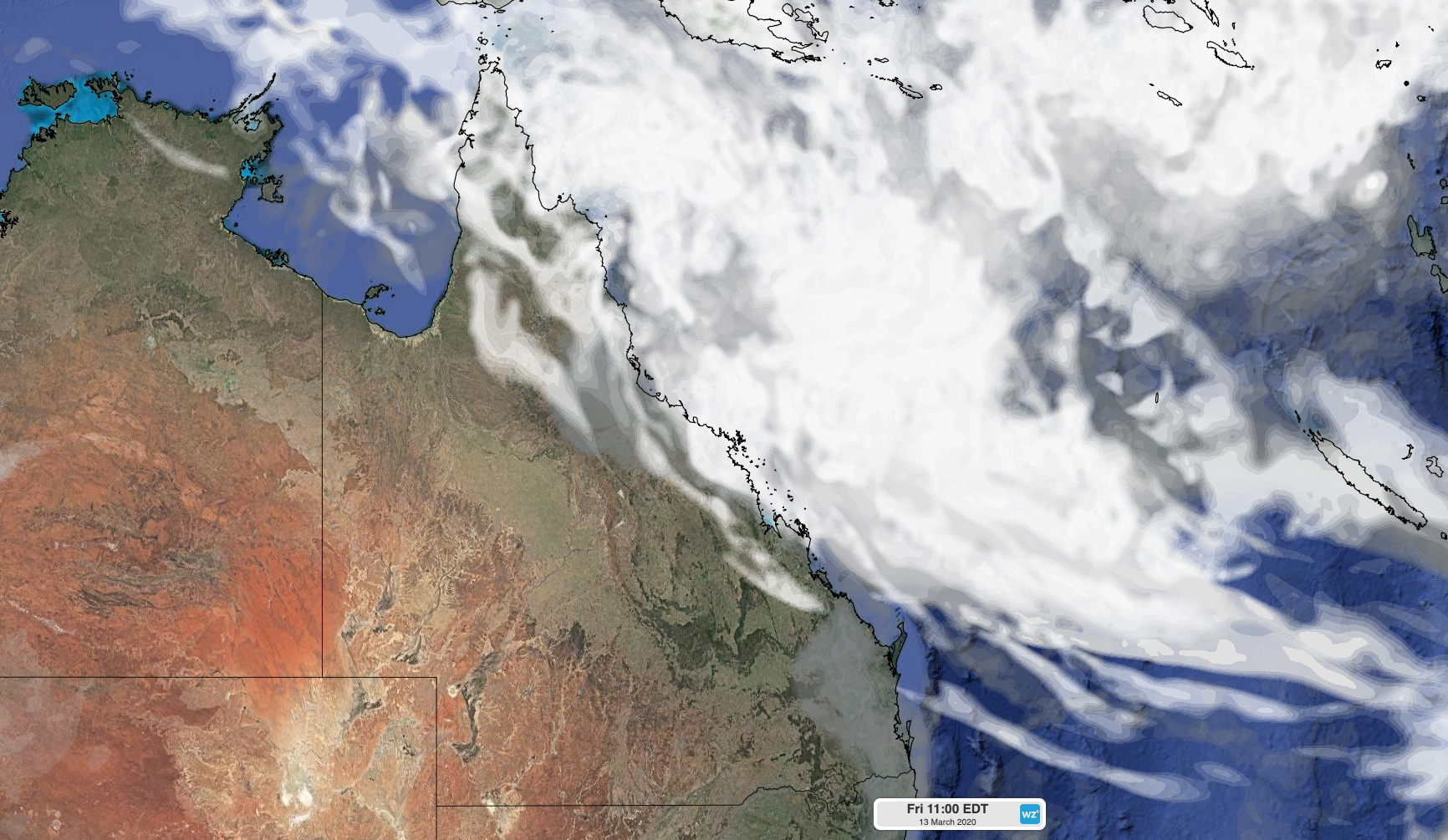Looming Coral Sea cyclone could be good news for bleaching Great Barrier Reef
A tropical cyclone is likely to develop over the Coral Sea later this week, potentially causing dangerous weather in parts of eastern Queensland. But while the looming cyclone may cause inclement weather on land, it should bring some respite for the Great Barrier Reef, which is currently experiencing its third bleaching event in five years.
Below-average cloud cover over the northern and western Coral Sea during summer helped cause above-average sea surface temperatures along the Great Barrier Reef. As of Sunday, March 8th, the waters off Queensland's east coast were between 1.5 and 3 degrees warmer than usual for this time of year.

Image: Sea surface temperature anomalies in the Coral Sea on Sunday, March 8th.
This abnormal warmth is causing the Great Barrier Reef to experience its third significant bleaching event since 2016.
Professor Terry Hughes, Director of ARC Centre of Excellence for Coral Reef Studies, will be overseeing a fortnight of aerial surveys covering the whole of the Great Barrier Reef, starting from next week.
"The Great Barrier Reef is bleaching again now for the third time since 2016. Hopefully, this event won't be as severe as 2016 or 2017" said Professor Hughes.
There are hopes that an increase in cloud, rain and wind over the Coral Sea this week, associated with a developing tropical cyclone, will help reduce the buildup of abnormally warm water over the reef. However, it's late in the season and some of the damage from the last few months can't be undone.

Image: Satellite image showing cloud developing over the Coral Sea on Tuesday, March 10th.

Image: Modelled cloud cover over Coral Sea on Friday, March 13th, according to the ECMWF-HRES model.
According to Professor Hughes, "the cyclone will help, but it's very late in the summer. We needed it in February."
Last month was the warmest February on record when looking at average sea surface temperatures over the Great Barrier Reef. In a typical year, sea temperatures around the reef usually peak during mid-March.

Image: Great Barrier Reef sea surface temperature anomalies during February from 1900 to 2020. Source: Bureau of Meteorology
Coral bleaching has been observed in the Great Barrier Reef during the last two decades, with severe bleaching events occurring in 1998, 2002 and 2006, and an unprecedented back-to-back bleaching episode in 2016-17.
The Bureau of Meteorology's State of the Climate 2018 report states that coral bleaching on the Great Barrier Reef has occurred with increasing frequency and intensity in recent decades. According to the report, the primary cause of marine heatwaves and the mass coral bleaching they produce are both likely due to warming oceans as a result of climate change.
Back on land, this week's developing tropical cyclone could cause heavy rain and blustery winds over parts of northern and eastern Queensland. A flood watch has been issued between Mackay and the Cape York Peninsula.